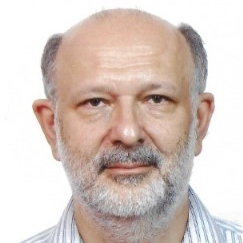Glial Cells in Synaptic Plasticity
A special issue of Cells (ISSN 2073-4409). This special issue belongs to the section "Cells of the Nervous System".
Deadline for manuscript submissions: closed (15 June 2023) | Viewed by 8104
Special Issue Editors
Interests: gliotransmission; synaptic plasticity; NMDA receptors & co-agonists; dopamine
Interests: gliotransmission; glutamate; astrocytes; glioblastoma multiforme
Special Issues, Collections and Topics in MDPI journals
Interests: gliotransmission; glutamate; astrocyte networks; nucleus accumbens; synaptic plasticity
Special Issues, Collections and Topics in MDPI journals
Interests: maladaptive synaptic plasticity; reactive gliosis; neuroinflammation; spinal cord; non-invasive stimulation
Special Issues, Collections and Topics in MDPI journals
Special Issue Information
Dear Colleagues,
Three decades ago, emblematic studies brought glial cells out of the shadows and then transformed modern neuroscience. Nowadays, glial cells are recognized as active partners of neurons supporting an amazing array of functions in the developing and mature brain but also contributing to neurological and psychiatric diseases and injury processes. It appears clearly that glial cells contribute to almost every aspect of brain computation and seems to guide our daily life. The field is still expanding at an accelerating pace.
For this Special Issue, we welcome all types of manuscripts (Article, Review, Hypothesis, Opinion, Perspective) providing biological insights into the particular roles of glial cells in synaptic and circuits functional and structural plasticity and the implication to cognition in the healthy and diseased nervous system in any animal models including organoids. Emphasis will be given to emerging technological and methodological (theoretical and experimental) tools that offer new avenues to refine our understandings of glia (dys)functions in brain computation.
Dr. Jean-Pierre Mothet
Prof. Dr. Vladimir Parpura
Dr. Marta Navarrete Llinás
Dr. Giovanni Cirillo
Guest Editors
Manuscript Submission Information
Manuscripts should be submitted online at www.mdpi.com by registering and logging in to this website. Once you are registered, click here to go to the submission form. Manuscripts can be submitted until the deadline. All submissions that pass pre-check are peer-reviewed. Accepted papers will be published continuously in the journal (as soon as accepted) and will be listed together on the special issue website. Research articles, review articles as well as short communications are invited. For planned papers, a title and short abstract (about 100 words) can be sent to the Editorial Office for announcement on this website.
Submitted manuscripts should not have been published previously, nor be under consideration for publication elsewhere (except conference proceedings papers). All manuscripts are thoroughly refereed through a single-blind peer-review process. A guide for authors and other relevant information for submission of manuscripts is available on the Instructions for Authors page. Cells is an international peer-reviewed open access semimonthly journal published by MDPI.
Please visit the Instructions for Authors page before submitting a manuscript. The Article Processing Charge (APC) for publication in this open access journal is 2700 CHF (Swiss Francs). Submitted papers should be well formatted and use good English. Authors may use MDPI's English editing service prior to publication or during author revisions.
Keywords
- glia heterogeneity
- gliotransmission
- neuron-glia communication
- synaptic plasticity
- cognition
- neuronal circuits
- synaptogenesis
- diseases
- glial calcium dynamics
- glial signaling









